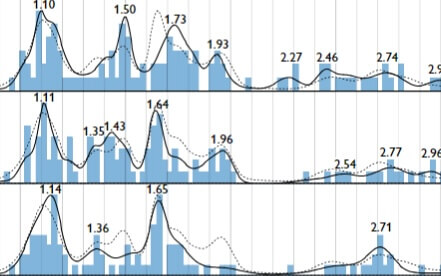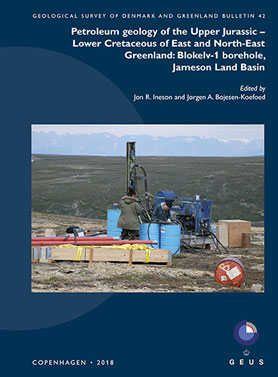
How to Cite
Share
Abstract
Zircon U–Pb geochronology and heavy mineral CCSEM analysis were used to interpret the provenance of Oxfordian–Volgian sandstones of the Hareelv Formation in East Greenland. Six samples were collected from the Blokelv-1 core drilled in southern Jameson Land, and the zircon age distributions and heavy-mineral assemblages are quite uniform. The samples contain a wide spectrum of Archaean to Palaeozoic zircon ages with peak ages at 2.71, 2.49, 1.95, 1.65, 1.49, 1.37, 1.10 and 0.43 Ga when combining all data. The heavy-mineral compositions show derivation from felsic source rocks, some of which were metamorphic. The results reveal that the sediment was derived from the Caledonides, and it is plausible that some or all of the material has experienced several cycles of sedimentation. Devonian and Carboniferous sediments preserved north of the area have zircon age distributions that correspond to those from the Hareelv Formation, and such rocks may have been reworked into the Jameson Land Basin. The provenance signature describes both the gravity-flow sandstones of the Hareelv Formation and the delta-edge sands that are inferred to have fed them. Lithological and provenance contrasts between the sandstones of the Sjællandselv Member and those of the Katedralen Member indicate a shorter transport distance, source to sink, suggestive of proximal topographic rejuvenation in the Volgian.
How to Cite
Share
Copyright (c) 2018 Mette Olivarius, Morten Bjerager, Nynke Keulen, Christian Knudsen, Thomas F Kokfelt

This work is licensed under a Creative Commons Attribution 4.0 International License.
Supplementary Files
Downloads
Editors: Jon R. Ineson and Jørgen A. Bojesen-Koefoed
The exposed Jurassic succession in East and North-East Greenland has long been presented as an analogue for equivalent deeply buried strata on the Norwegian conjugate shelf and offshore North-East Greenland. In particular, the Upper Jurassic marine mudstone succession is often ascribed source-rock potential as [...]









